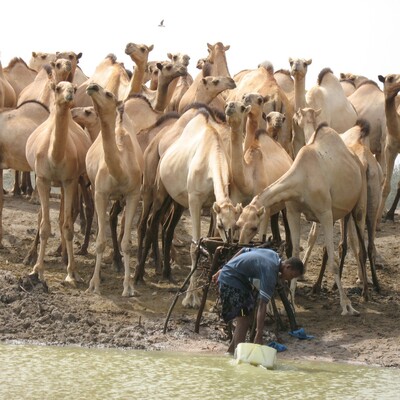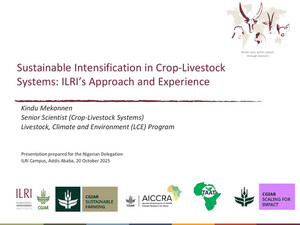
Effects of cropping system, seed bed management and fertility interactions on biomass of crops grown on a Vertisol in the central highlands of Ethiopia
Abstract
In the Ethiopian highlands, where integrated crop and livestock production takes place, the inadequate supply, in both quantity and quality of feeds during the year is a major constraint. Native pastures and crop residues are the major feed sources, but their quality is often poor. Integration of forage legumes in the cropping system is one alternative to imporve the fodder quality. Results of field work conducted over two seasons in order to assess and evaluate the potential yields of crops, crop/forage combinations and rotation systems on a Vertisol under two seed bed preparation systems showed that inter-cropping wheat with clover or sequential cropping of an oat/vetch mixture followed by chickpea provided high-quality fodder; the effect was greater under fertilized conditions. In addition, where monocropping treatment was tested, legume-cereal rotation resulted in higher grain and fodder yield when compared to cereal-cereal rotation. The study also showed that two short-duration crops could be produced in sequence per year. It is therefore suggested that the Vertisols in the Ethiopian highlands could provide a good opportunity for longer period cropping using improved food opportunity for longer period cropping using improved and forage crops, thereby improving the availability and quality of animal feed and protecting the land against erosion.
Citation
Journal of Agronomy and Crop Science;183: 205-211









